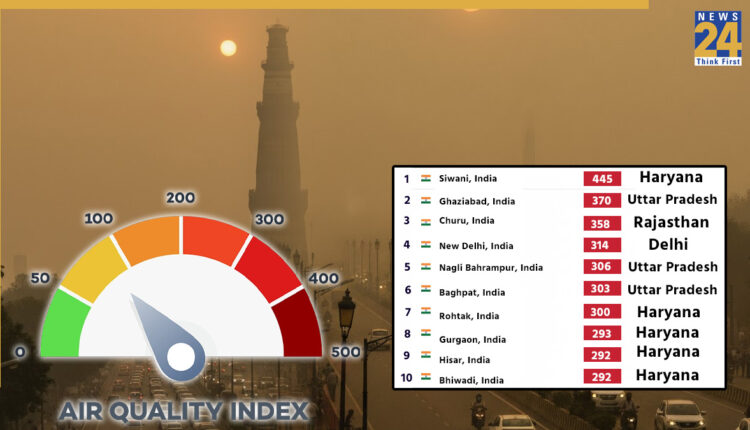AQI Level Today: According to the Air Quality Index (AQI) measured at 2:30 PM on November 1, 2025, all 35 of the world’s most polluted cities were located in Indian cities. This is a concerning development. Even though Delhi is usually the face of India’s pollution problem, it only came in at number five this time. Several smaller northern cities had even higher AQI levels, which put them in danger of falling into the severe and hazardous categories.
Delhi AQI Level Still Hazardous
Delhi’s air quality index (AQI) of more than 300 still indicates dangerously contaminated air, placing it in the hazardous category. However, a number of lesser-known places outperformed it, demonstrating how the pollution problem has extended outside of the nation’s capital. This change is partly a result of local weather patterns, geographic considerations, and agricultural burning that traps pollution in smaller cities in the early winter.
Pollutants released close to the surface remain trapped as temperatures decline and air mixing reduces, particularly in northern India. Burning agricultural residue, open garbage, unpaved roads, and dust from construction all intensify this.
Smoke from stubble burning in neighboring states (UP, Punjab, and Haryana) frequently enters neighboring cities. Road dust and construction dust are major contributors, particularly in urban areas that are growing quickly. The pollution load is increased by vehicle emissions, which are frequently from diesel engines and older cars. Power generation and industrial emissions also contribute, although particulate matter (PM₂.¹/PM₁¹) rather than merely gases are the main problem in many of the worst AQI locations.
Find out the world’s most polluted cities with the real-time rankings of AQI HERE
High levels of air pollution and related risks to health, which can vary from little discomfort to major respiratory and cardiovascular problems, are indicated by a high Air Quality Index (AQI). Vulnerable populations, such as children, the elderly, and people with respiratory conditions, should limit their outside activity when AQI readings are high, especially above 100. Everyone is encouraged to minimize their outdoor activities to avoid negative health impacts.

